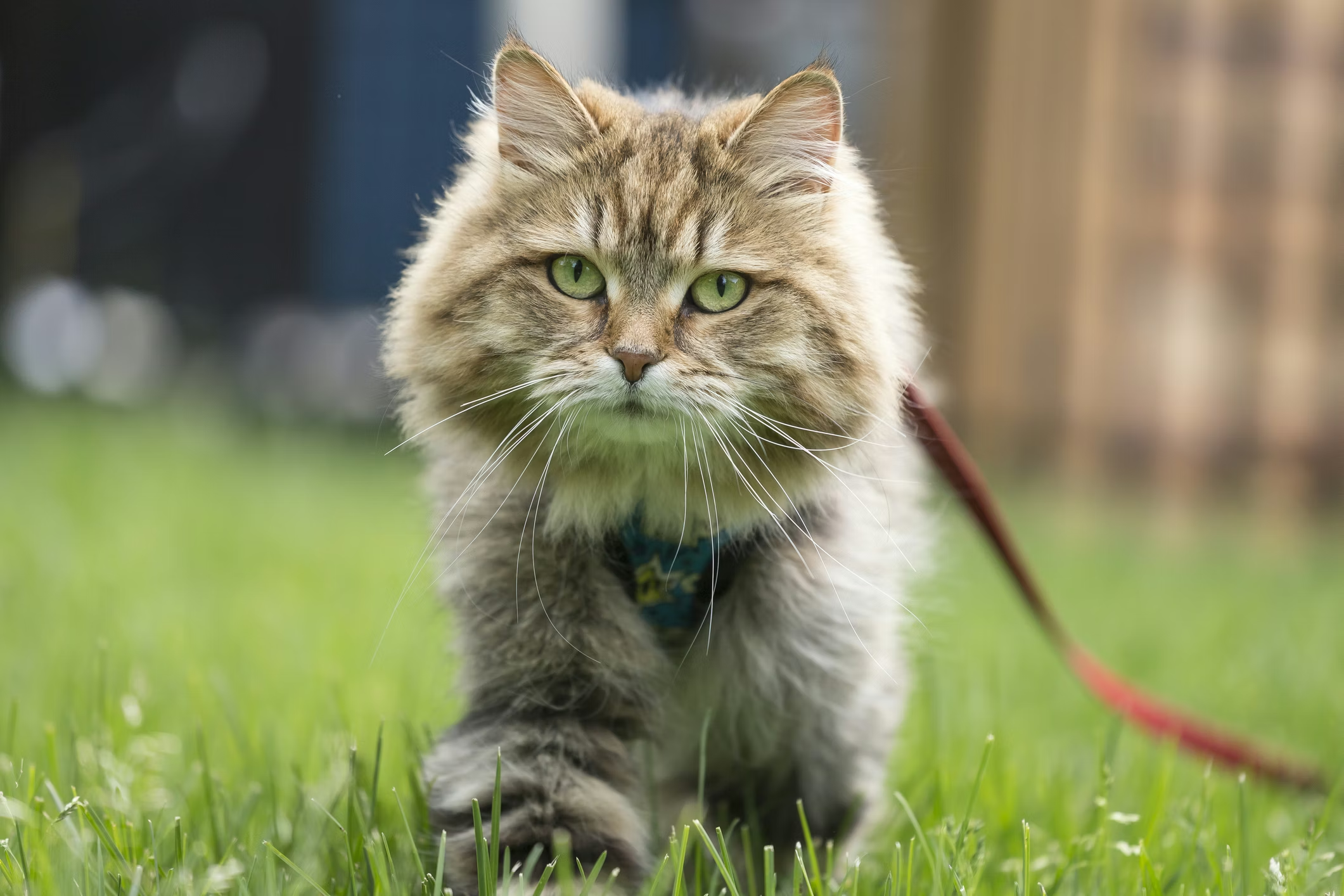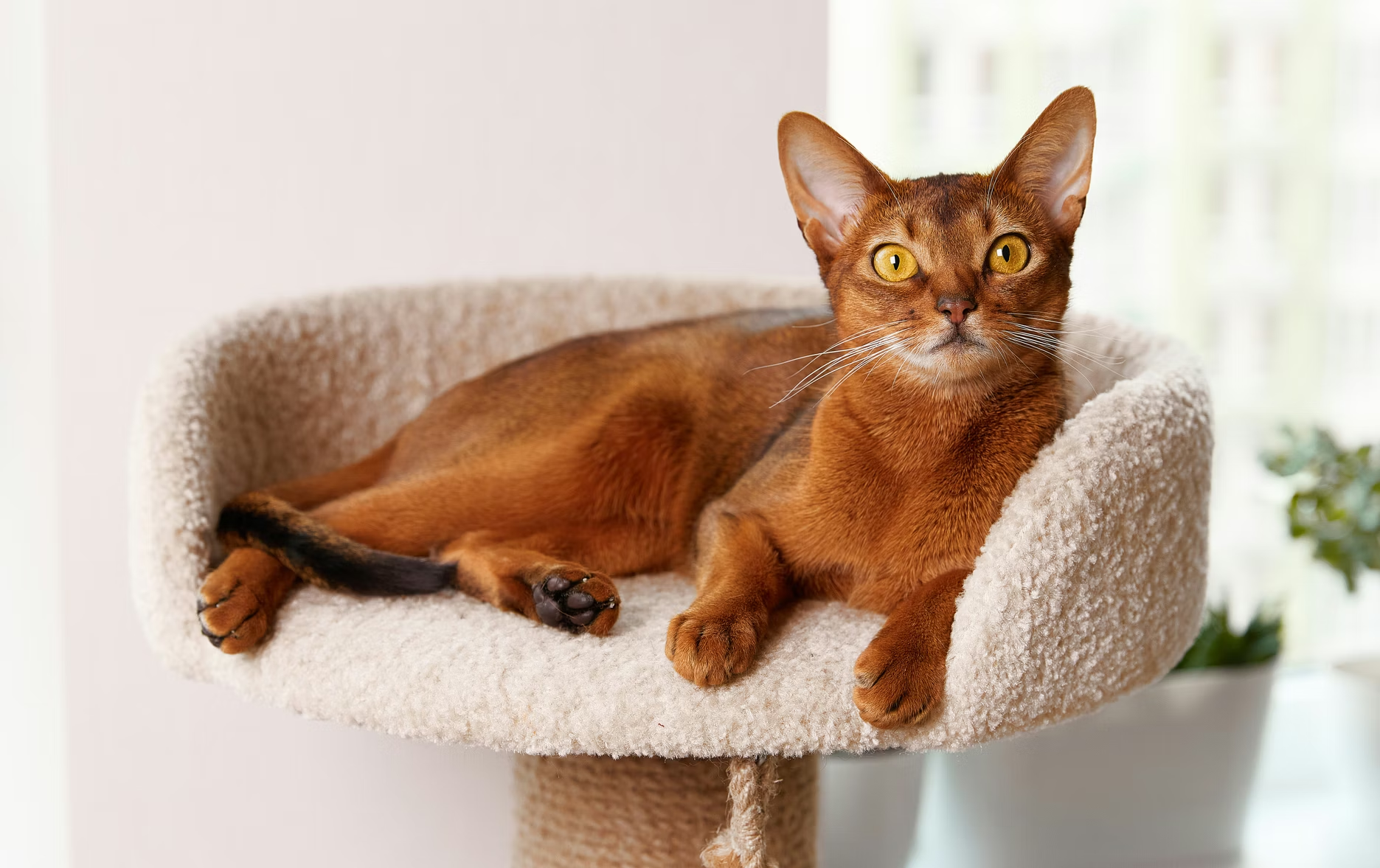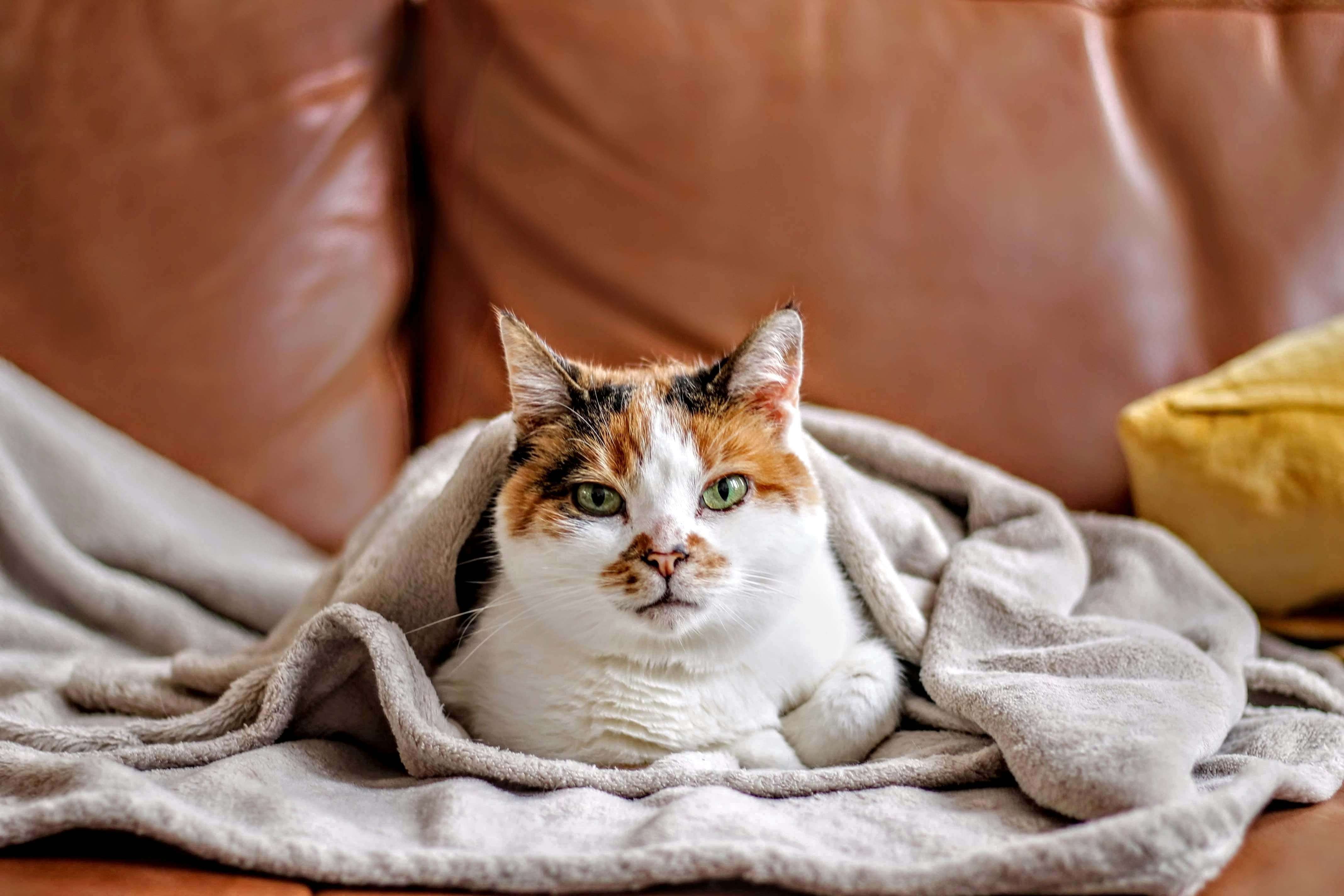Blindness in cats can be permanent or temporary, and can affect one or both eyes. Understanding the root cause of your cat’s vision loss is important for providing them with the best care. In this blog post, we’ll share some common causes of blindness and discuss ways you can help your cat adjust to life if their vision changes.
What causes blindness in cats?
Vision loss in cats can result from a variety of conditions, including congenital issues (i.e., issues they are born with), trauma, or disease. Knowing what’s behind your cat’s blindness is key to determining what, if any, treatments can provide relief or improvement.
Conjunctivitis
Conjunctivitis is a common condition that occurs when the tissue of the inner eyelid, third eyelid, or white part of the eye becomes inflamed and swollen. Affected eyes may be itchy or uncomfortable and often produce a discharge. There are different causes for conjunctivitis, including trauma, abnormal tear production, abnormal eyelids, trapped foreign material, allergy, bacterial infections, or viral infections. Left untreated, severe chronic conjunctivitis can lead to vision loss. If you see any redness or swelling in your cat’s eye, or see them blinking, squinting, or pawing at their eye frequently, it warrants a trip to the veterinarian for evaluation.
Pet parents should also be aware that feline herpesvirus — a highly contagious infection — can lead to conjunctivitis in cats. Chronic inflammation or scarring from infections can damage the cornea, impacting a cat’s vision over time. While antiviral medications and supportive care can manage symptoms, a minority of cats may still experience partial or complete blindness due to feline herpesvirus.
Cataracts
A cataract is a condition in which the lens of the eye becomes cloudy, preventing light from reaching the retina. They are less common in cats than in dogs, and can be caused by a genetic predisposition, age, injury, infections, or an underlying health condition. If left untreated, cataracts may cause blindness. Veterinary ophthalmologists may recommend surgical removal of the cataract in certain cases. Breeds including the Himalayan, Birman, and British Shorthhair are considered at greater risk for cataracts.
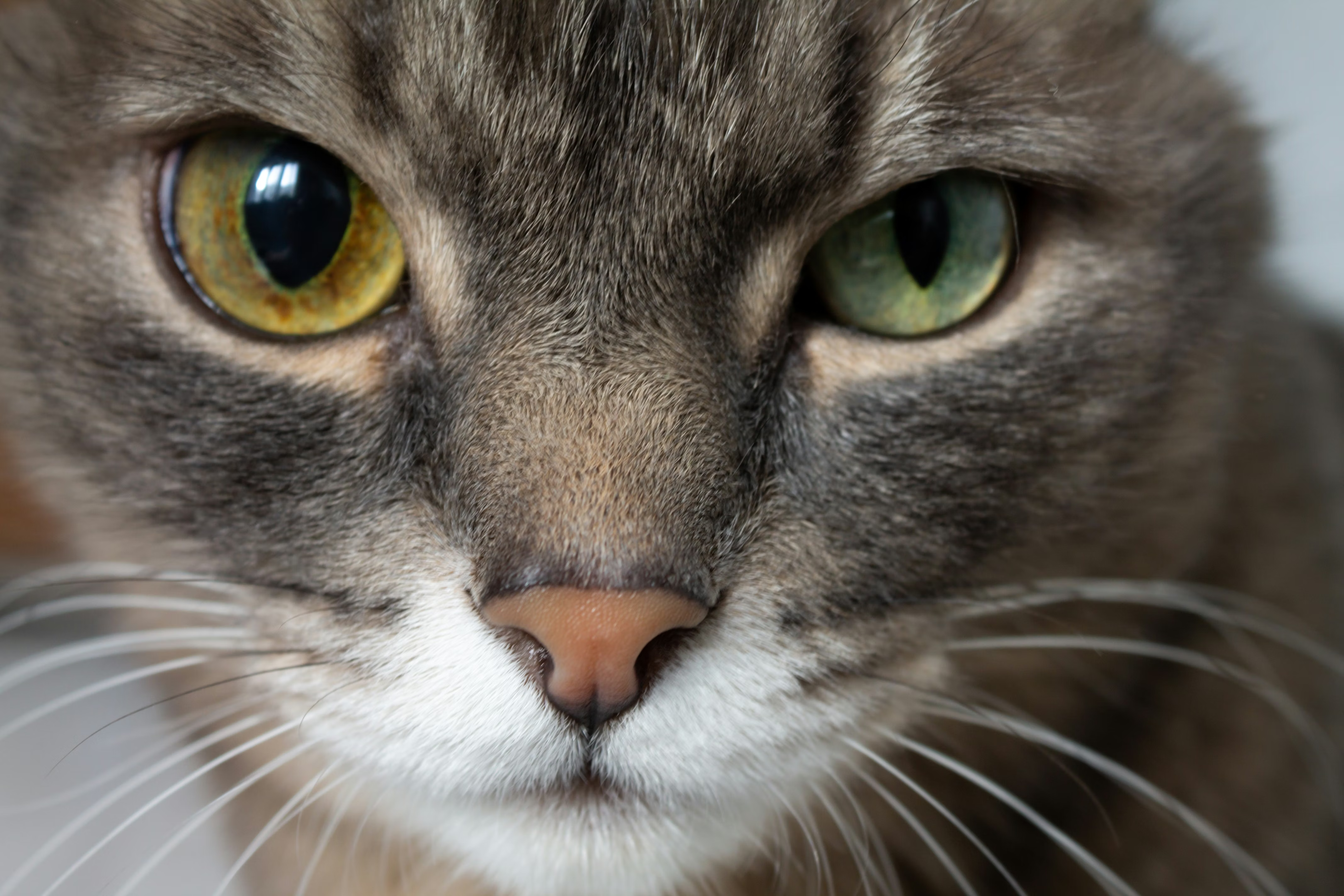
Glaucoma
Glaucoma is typically a progressive condition caused when fluid at the front of the eye is unable to properly drain. Under normal circumstances, new fluid is produced at the same rate as the fluid is drained, but in glaucoma, fluid and pressure builds within the eye. Excessive pressure may damage the optic nerve, leading to permanent vision loss. This condition can be genetic (Siamese and Burmese cats are two of the breeds that are predisposed to glaucoma) or it may be caused by an underlying illness. Initial signs of the disease are typically associated with eye pain, such as squinting and eye rubbing, but bloodshot eyes, cloudiness, discharge, or a bulging appearance of the eye may also be noticeable.
Because glaucoma is extremely painful, the cat may hide, show abnormal behavior, or not wish to be touched. Acute signs of glaucoma should be considered an emergency, as nerve damage and vision loss is typically permanent, but if pressures can be managed quickly enough, blindness may be postponed. A veterinarian can treat your cat to reduce pain and discomfort associated with the disease.
Retinal detachment
Retinal detachment occurs when the retina, a thin layer of photoreceptors necessary for vision, separates from the underlying tissue at the back of the eye, depriving the light-sensitive cells of blood supply and disrupting vision. The most common cause of retinal detachment is fluid build up due to hypertension, but can also be caused by trauma, infection, inflammation (uveitis), glaucoma, or cancer. High blood pressure can stem from kidney disease, hyperthyroidism, or other underlying causes, and it often results in sudden blindness. Fast treatment is needed to restore vision and prevent permanent blindness. Your veterinarian can diagnose retinal detachment and determine the best course of action based on the root cause.
Progressive retinal atrophy
Progressive retinal atrophy (PRA) refers to a group of genetic conditions in which the retina’s photoreceptors degenerate, leading to irreversible blindness. Wisdom Panel™ Complete for Cats detects three forms of PRA, including Bengal PRA, Persian PRA, and rdAc PRA, which is found in a number of breeds. Cats with PRA may initially struggle in low-light conditions as rods are often lost first, before losing their vision completely. While there is no cure for PRA, the condition is not painful and cats often adapt well to vision loss.
Uveitis and Chorioretinitis
Uveitis (inflammation of certain inner structures of the eye) and chorioretinitis (inflammation of the retina and choroid) can be caused by infections associated with feline leukemia virus (FeLV), feline immunodeficiency virus (FIV), feline infectious peritonitis (FIP), toxoplasmosis, and other viruses that weaken a cat’s immune system. Sometimes these conditions can lead to secondary conditions like glaucoma and cataracts mentioned above, and cause vision loss. Regular veterinary check-ups and vaccinations are crucial for reducing the risk of these diseases.
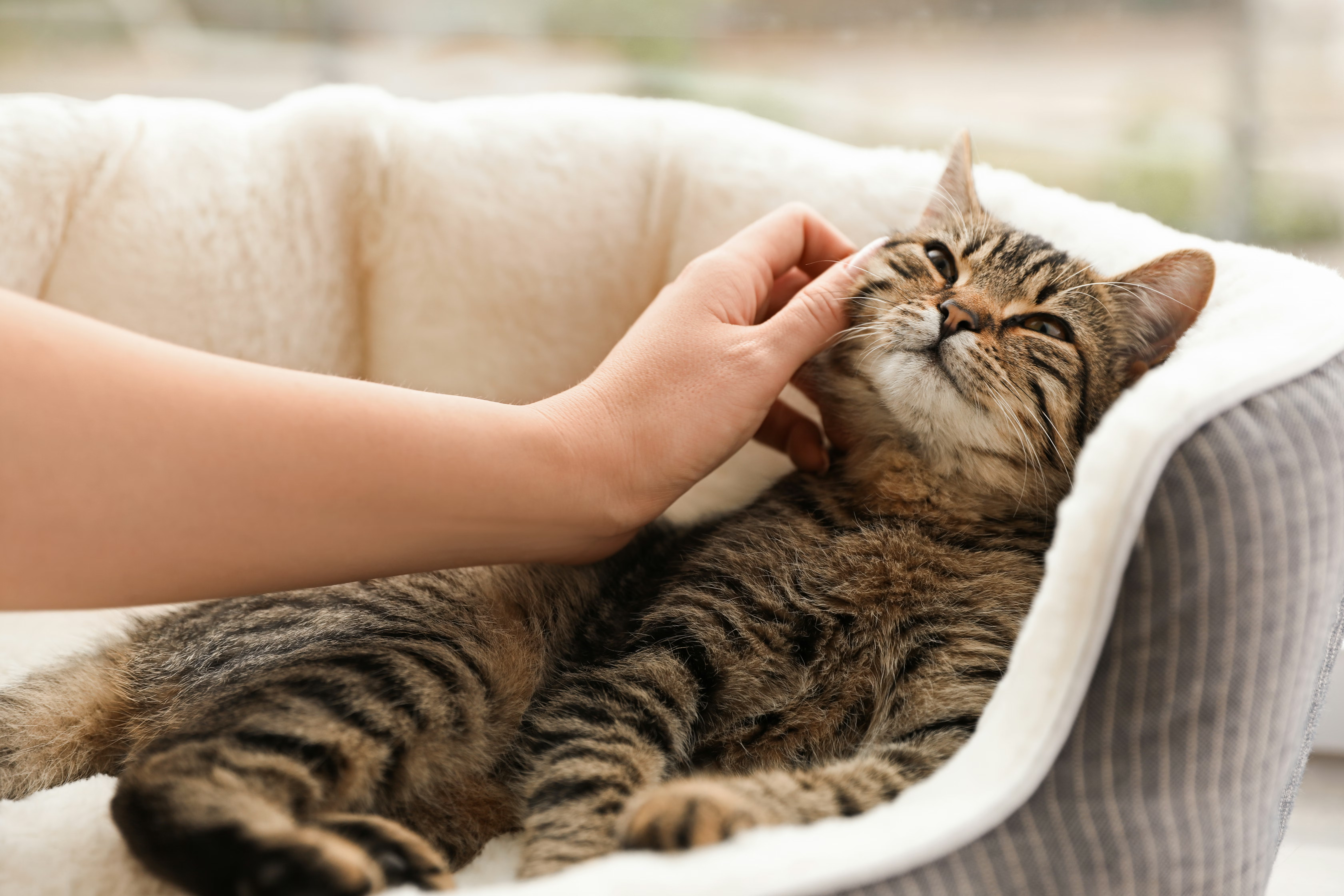
How to tell if a cat is blind
Recognizing signs of blindness in cats is key to ensuring they get the care they need. Indicators to look for include:
- Bumping into furniture or walls
- Hesitation to jump or climb
- Cloudy or discolored eyes
- Enlarged pupils that don’t respond to light
- Difficulty locating food or water
- Increased vocalization
If you notice any of these signs of blindness in cats, schedule a visit with your veterinarian.
Caring for a blind cat
Cats that are partially or completely blind can live fulfilling lives when provided with the right care and environment. Here are some tips to help them thrive:
- Keep a consistent environment: Avoid moving furniture, beds, or food and water bowls, as blind cats rely on their memory to navigate.
- Use scent and sound cues: Place toys with bells or catnip in their play area, and consider adding textured rugs to help them identify spaces.
- Create safe spaces: Keep windows and doors closed and block access to balconies or stairs.
- Encourage play: Blind cats enjoy interactive toys with sounds or textures. Daily play helps them stay physically and mentally stimulated (and is fun for pet parents, too).
- Partner with a veterinarian: Routine check-ups will help address any health concerns and monitor conditions that could worsen over time.
Final thoughts
Blindness in cats can be caused by a range of factors, but by creating a supportive environment you can help your cat live a safe and happy life. If you suspect your cat is losing their sight, consult your veterinarian right away for a complete examination and treatment options based on your pet’s needs. With a little extra care and love, your cat can adapt to their new way of navigating the world.

